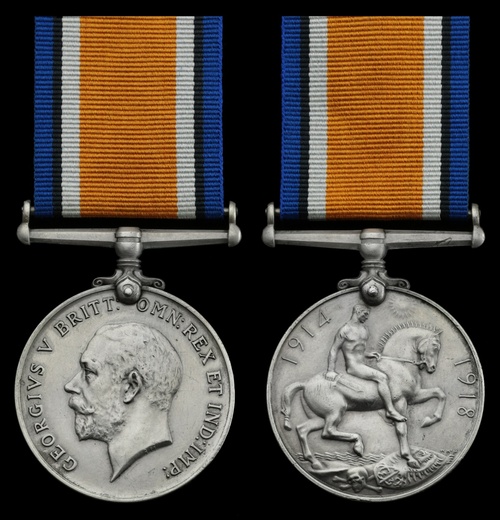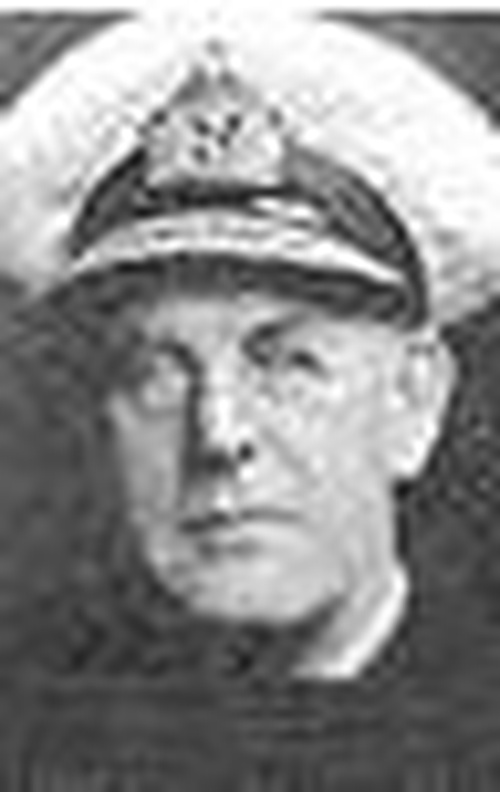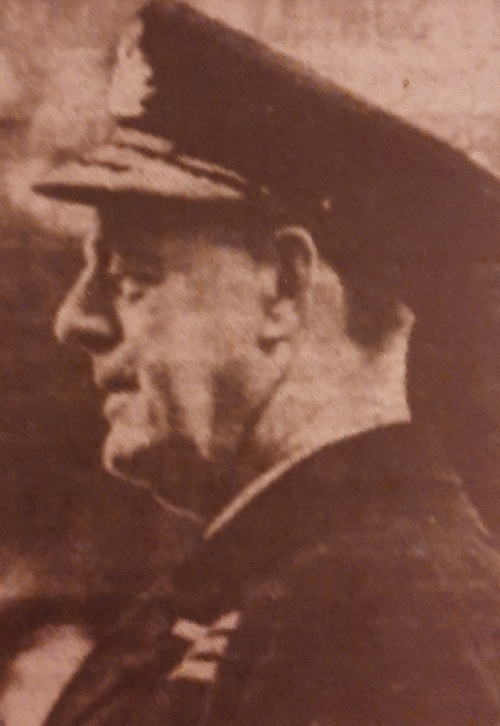Auction: 22133 - Orders, Decorations and Medals - e-Auction
Lot: 186
The British War Medal awarded to Admiral H. J. S. Brownrigg, Royal Navy, C.B., K.B.E., D.S.O. who won his D.S.O. as Executive Officer aboard Barham at Jutland and as former Commander-in-Chief of the Nore was to become the highest ranked naval casualty of the Second World War
British War Medal 1914-20 (Commr H. J. S. Brownrigg. R.N.), slight edge bruise, very fine
[C.B.] 1933
[K.B.E.] 1937
[D.S.O.]
[Order of St. Stanislas], 2nd Glass (with Swords), London Gazette 5 June 1917.
London Gazette 15 September 1916, the original recommendation states:
'Commander Brownrigg took charge of and conducted the operations in connection with dealing with fires and repairs to damage by shell. He was continually in positions of greatest danger, and where the conditions were most trying to the nerves. His example inspired all those under him, and he was largely instrumental in keeping the ship in effective fighting condition to the end of the action, notwithstanding the severe damage from shell fire.'
Henry John Studholme Brownrigg was born at Muree, Bengal on 3 September 1882, the son of Colonel Henry and Alicia Brownrigg. The younger Brownrigg joined the Royal Navy as a Midshipman on 15 February 1898, soon seeing action in the Boxer Rebellion (Medal). The young officer was fast tracked for promotion to Sub-Lieutenant on 3 September 1901, his record stating 'did very good work when landed with adml. Seymour + Peking Relief expeditions'. He was further 'mentioned', a fine indication of what was to come from his career (London Gazette, September 1900 refers)
Continuing to serve Brownrigg's rise was swift with many of his commander's giving glowing reviews of his conduct which called him 'Indefatigable', 'Exceptionally capable' and 'Zealous'. Promoted Commander on 31 December 1913 he was present aboard the King George V on the sinking of the Audacious on 27 October 1914. Soon posted to H.M.S. Barham Brownrigg was serving as executive officer aboard this Queen-Elizabeth class Battleship at the Battle of Jutland.
As part of the 5th Battle Squadron Barham was a late arrival in the first part of the battle, the 'run to the south'. Admiral Hipper himself acknowledged that the arrival of the Squadron with its powerful weaponry and well trained gunners swung the action in favour of the British. Unfortunately for Beatty and his battlecruiser fleet the High Seas Fleet was fast approaching and they had no choice but to withdraw. Barham formed part of the rear-guard and saw heavy fighting, she received six hits and together with Valiant is thought to have landed between 23-24 of her own. Brownrigg was awarded the D.S.O. for his role in the Battle, having taken charge of repairs during the fighting, a role which placed him regularly in the line of fire.
Remaining with Barham for much of the war he was promoted Captain on 31 December 1918 and again commended with a 'mention' for his role in the war (London Gazette 21 June 1919). Continuing to rise through the ranks after the war he became Chief of Staff to the Rear-Admiral commanding the Africa Station, a role he served in between 1922-24. Going ashore as Deputy Director, later Director, of the Gunnery Division, Naval Staff and didn't return to sea until April 1929 when he served aboard the aircraft carrier Courageous.
Promoted Rear-Admiral on 15 May 1930 Brownrigg was given command of the Third Cruiser Squadron in 1933 a role he held throughout the Italian-Abyssinian war, with his flag aboard the Delhi. Further advanced Vice-Admiral on 20 July 1935 he was given command of the Reserves with a special concern for training officers of the Merchant Navy in anti-submarine tactics. Finally promoted Admiral on 15 May 1939 while Commander-in-Chief at the Nore, a role he was to hold until December that year.
Brownrigg retired in 1940 and was engaged in other duties for the Admiralty, also beocming one of the first to enrol in the Home Guard, commanding the Chatham Division of that unit. Applying for sea-going employment he was given work commanding convoys with the temporary rank of Commodore (Admiral retired).
Commanding the Ville de Tamatave an old French liner taken in 1941 from the Vichy Government with the convoy ON 16. Leaving Liverpool on 12 January 1943 heading for New York, Ville de Tamatave was an old ship and not in the shape needed to make the rough crossing in the North Atlantic. Her rudder was damaged, some newspaper articles suggesting a U-boat attack as the cause, and the Ville de Tamatave was last seen foundering on 24 January 1943. She sank with all hands including Brownrigg who is commemorated upon the Liverpool Naval Memorial; sold together with handwritten research and copied research including newspaper articles, service papers, Commonwealth War Graves Details and admiralty records relating to the loss of the Ville de Tamatave.
Subject to 20% VAT on Buyer’s Premium. For more information please view Terms and Conditions for Buyers.
Sold for
£190
Starting price
£40









